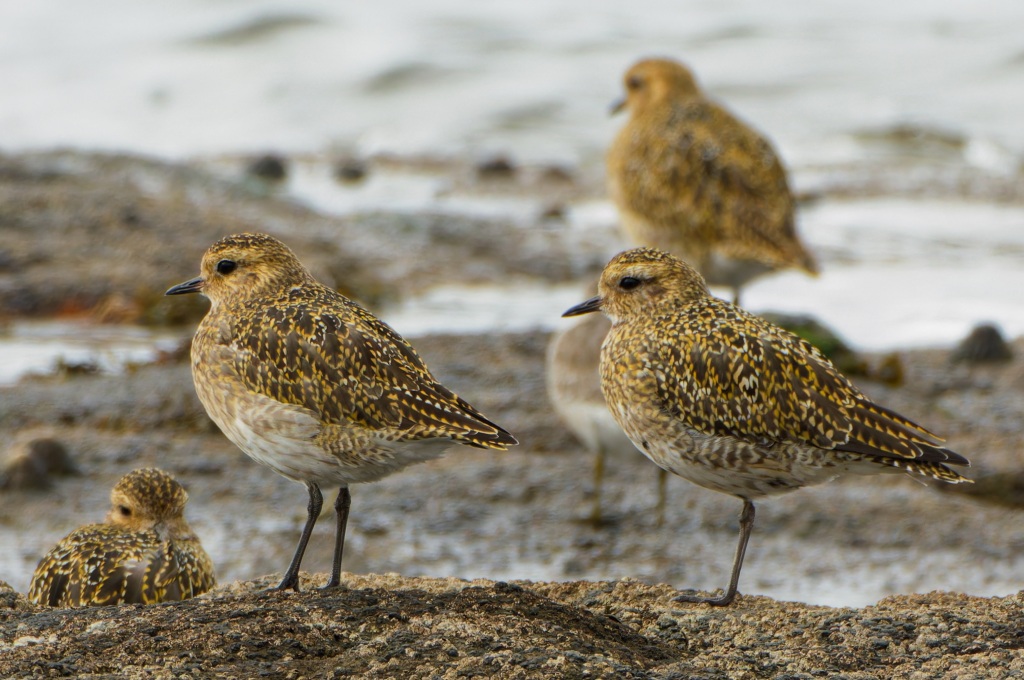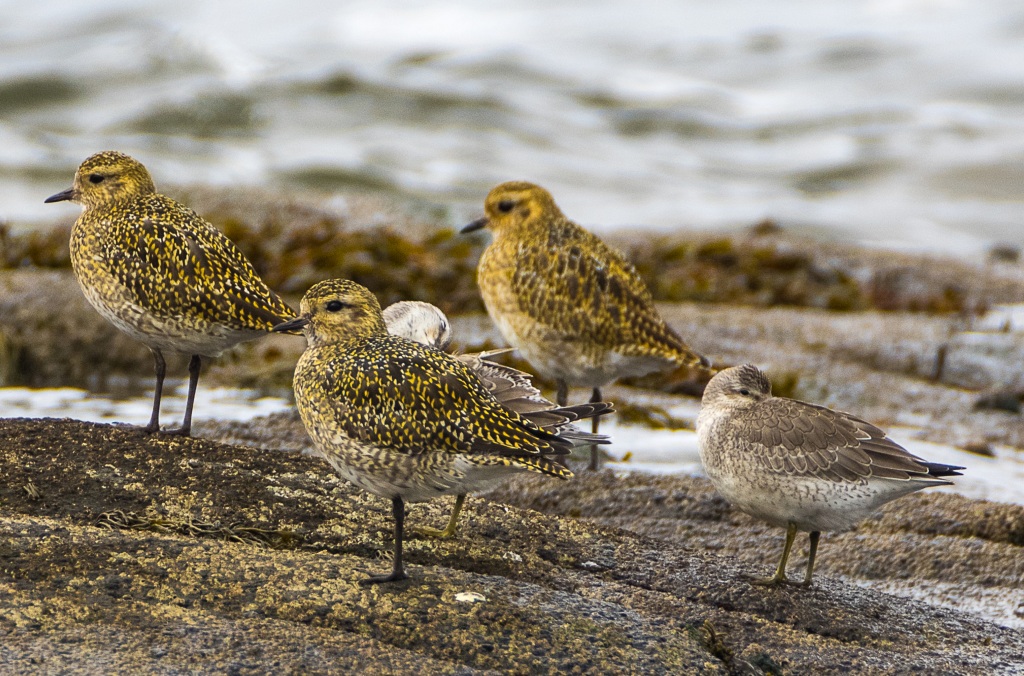
Our first real sighting of Golden Plovers came out in East Lothian in the winter. We’d taken the train to Longniddry then walked to the shore and headed east towards Aberlady, picking our way carefully around the hostile territory of Kilspindie Golf Course.
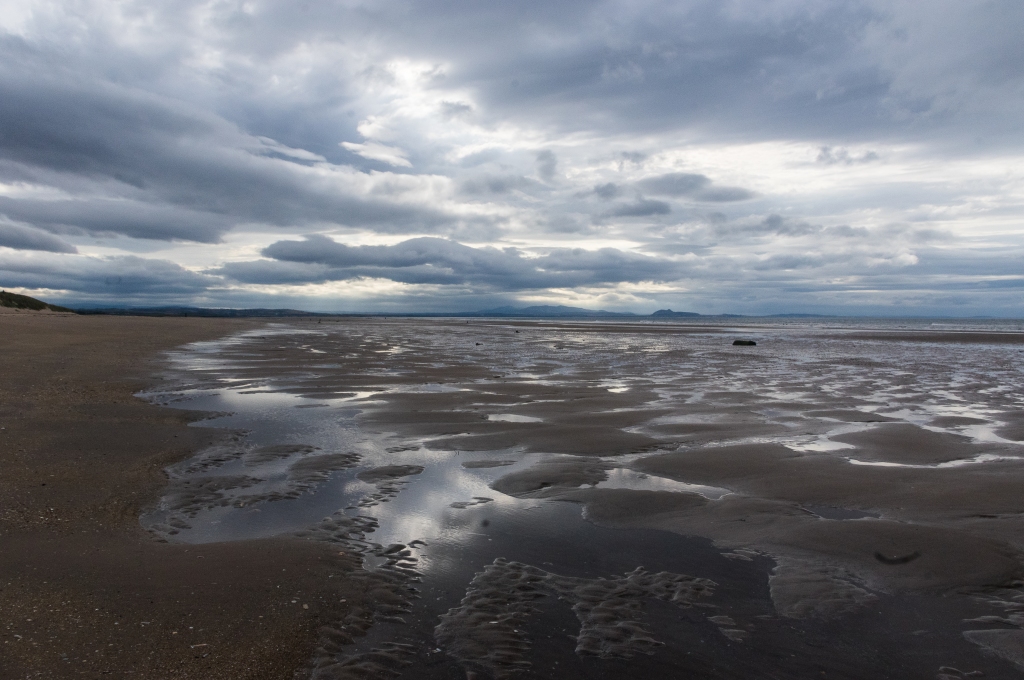
At Aberlady Point, we sat down for some tea from the Thermos and something unforgettable happened. Hundreds of birds seemed to drop as if shot from a clear sky to sit on the sand in front of us. They were of the order of a hundred metres away but we could identify them through the birdscope – Golden Plovers, they had to be. They faced us in ranks, jostling slightly. From time to time, a bird would be nudged from the end of the rank and fly around to the other side. This went on for some time until a Peregrine flew towards us fast from the west and up and away went the Plovers.
The second time was in Islay in the summer. We were heading for Machir Bay on bicycles and a small flock of birds in breeding plumage skimmed over our heads and dropped into a field. Backwoodsman pretty much fell off the bicycle and scrambled towards a nearby gate to get sight of these wonderful things but they had vanished behind a rise.
Subsequent vists to Aberlady, and to the North Ayrshire coast have provided opportunities for photographs. Our visit to Barassie Rocks at the end of November reprised the Aberlady sighting – a clear blue sky was full of Golden Plovers which circled, and gradually worked their way closer and closer, with some attempting to land on the already busy Rocks. The better photographs of birds on the wing were had using manual focus because autofocus was pure hopeless; the trajectory of the flock was perfect for Backwoodsman to spin the camera around the monopod and stay in touch with the birds with only a small focal adjustment.

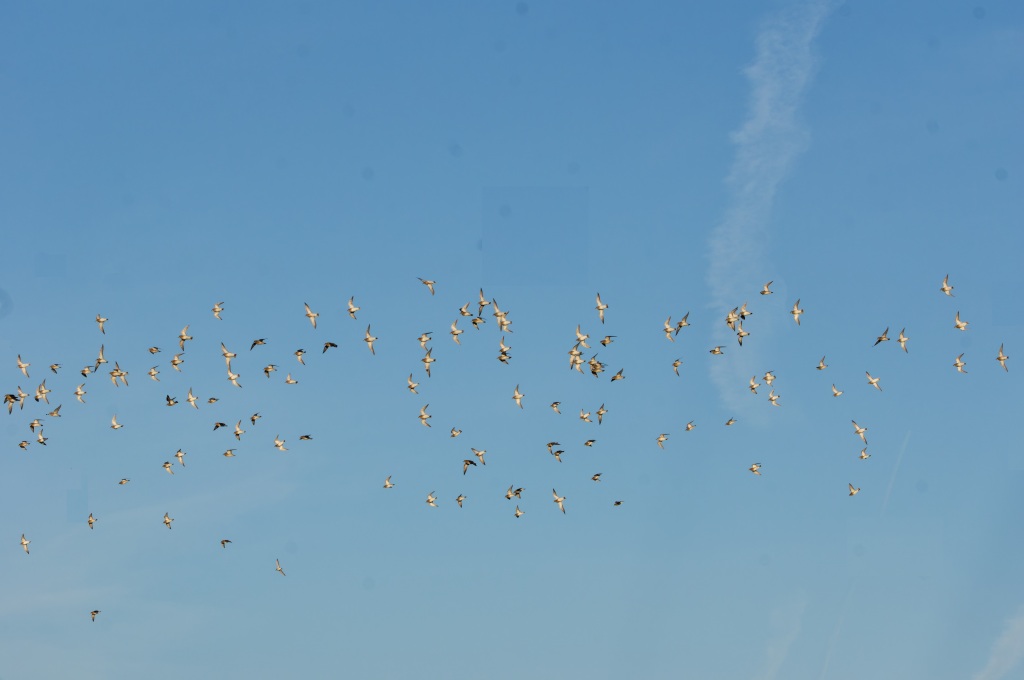
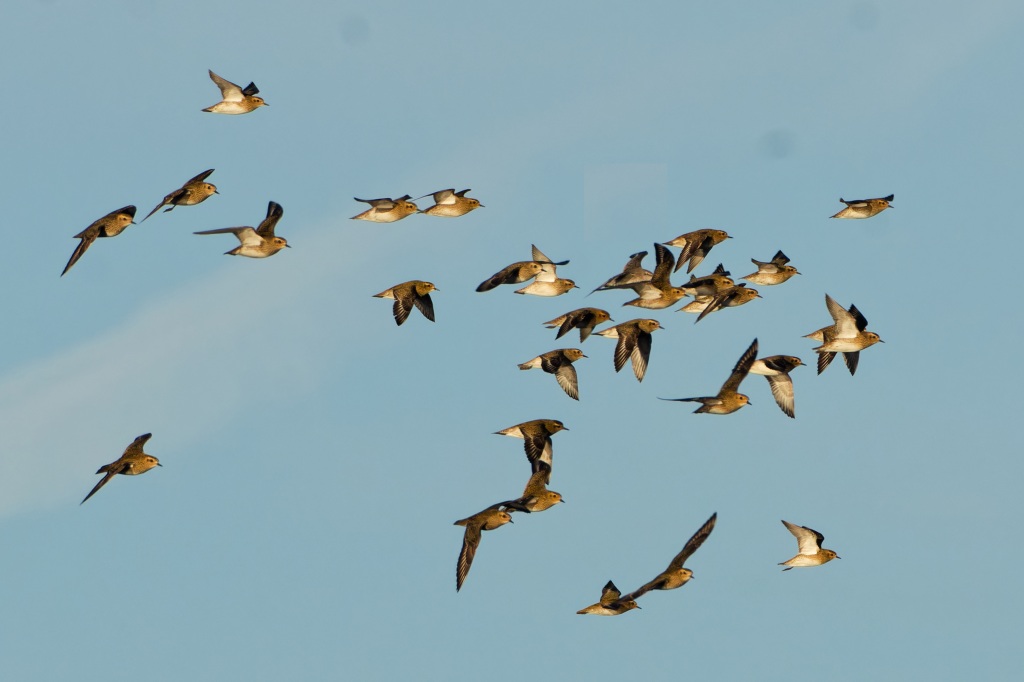

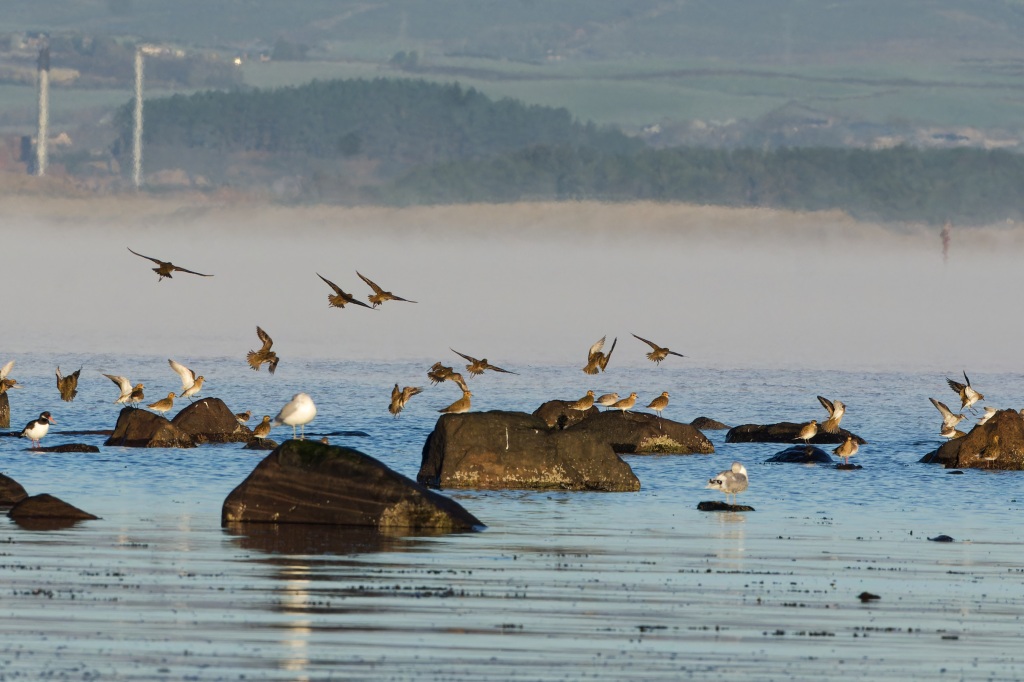
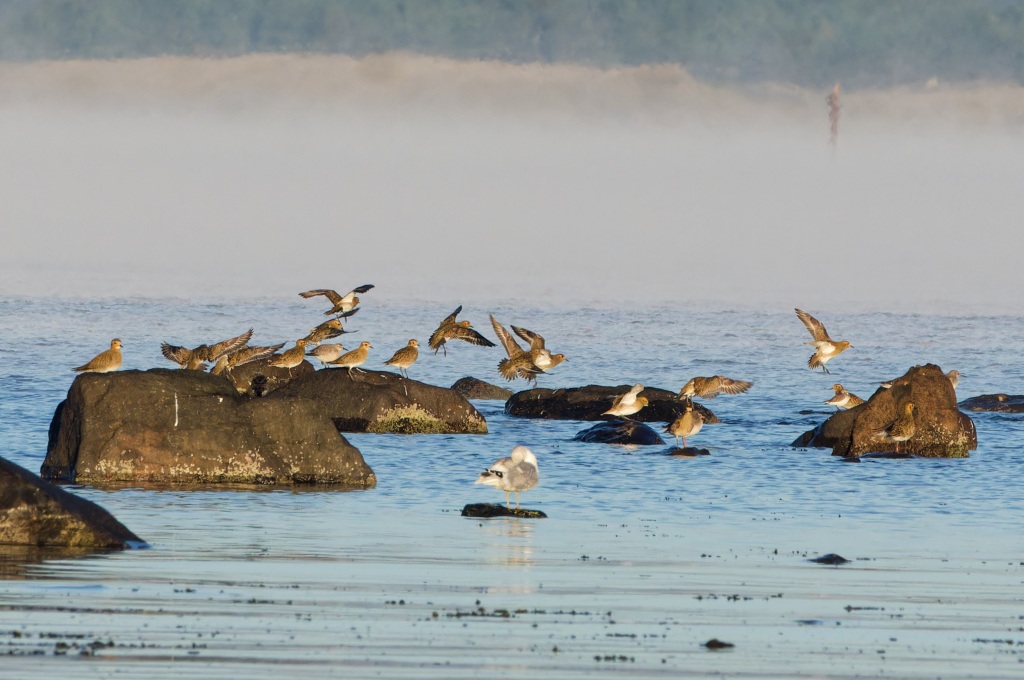
Golden Plover can be shot in Scotland between the first of September and the last day of January according to the British Association for Shooting and Conservation website. Her Royal Highness The Princess Royal became Patron of BASC in October 2022, succeeding her father HRH Prince Philip The Duke of Edinburgh in the role. A like for like replacement then.
Backwoodsman has never actually ever seen a Golden Plover eating but then they do mostly exist on tiny fragments of gold leaf eroded from ecclesiastical and municipal statuary, it is known. They eat the odd beetle or worm when the nine carat stuff can’t be had. It is hard to see them becoming agricultural pests and requiring control in the interests of conservation from the BASC. Backwoodsman says “more Golden Plovers, fewer royals, thank you.” Backwoodsman’s republican spite has been especially piqued just the now by the recently published Truss honours list.
Getting close to the little chaps (Golden Plovers, not royals) requires good luck and patience. Backwoodsman found a small flock on the Ballast Bank at Troon some years ago. It is not obvious why they were sitting about on the rocks well after high tide but there they were, and they allowed Backwoodsman to inch his way across the shingle towards them. They hopped a wee bit but didn’t take off, and Backwoodsman filled his boots and then retreated across the beach to leave them in peace.
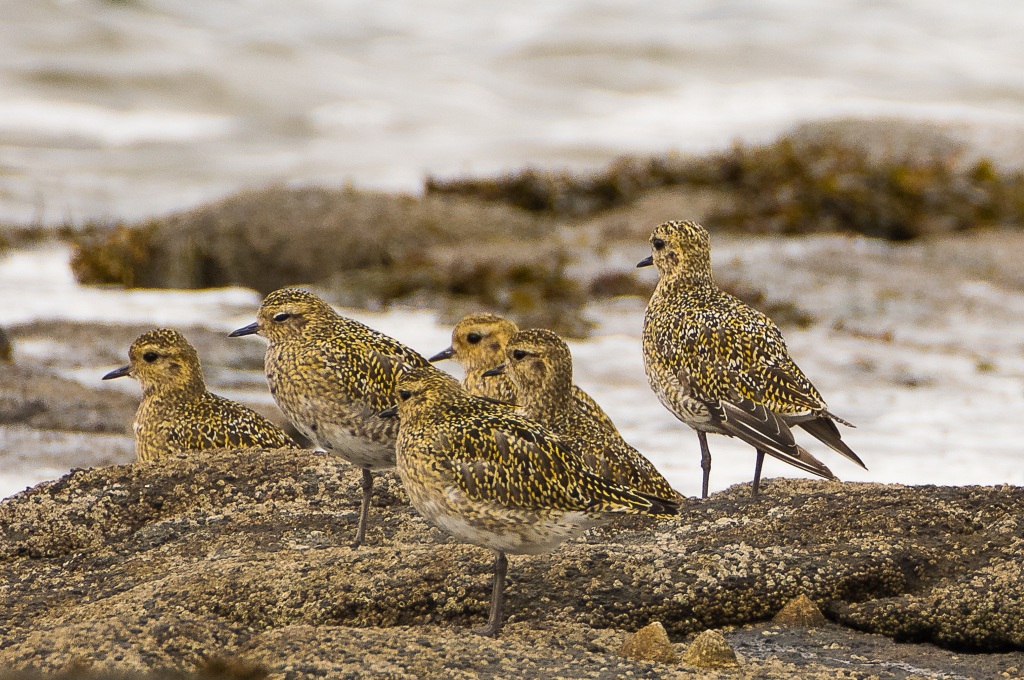
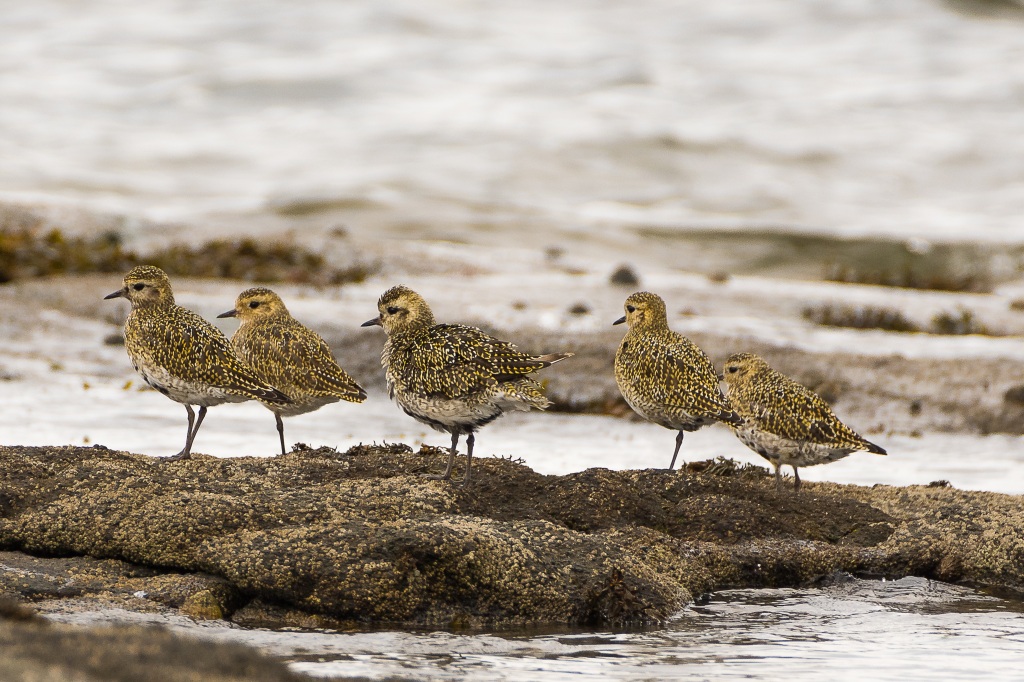
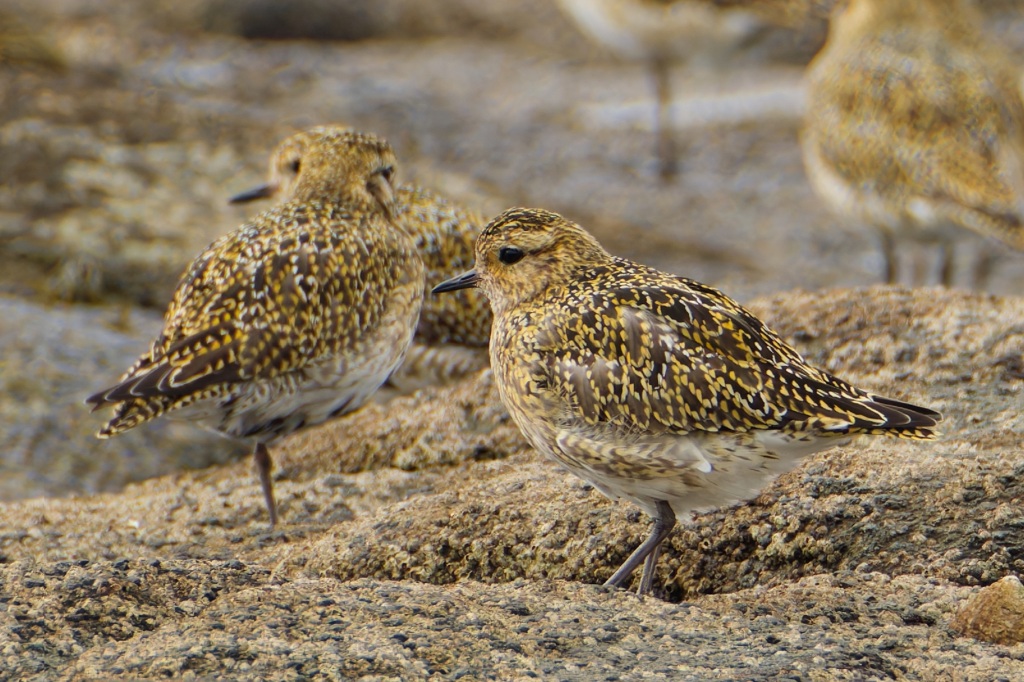
How do birds know what they look like? Golden Plovers always seem to pick barnacled rocks for their resting places. This photograph from Aberlady shows two species apparently selecting backgrounds against which they will blend well. Backwoodsman thinks that the distant background is Leith.

Two wader postings in rapid succession? Well, the Dunlin is known as the Plover’s page, so the Dunlin came before, announcing the arrival of these gilded creatures, which seems right and proper. Genuine national treasure.
